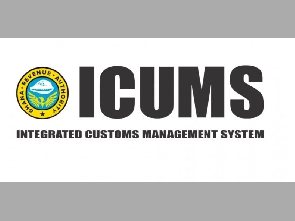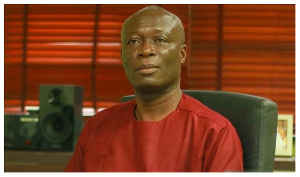The new ICUMS platform for trade facilitation at Ghana’s points of entry has proved controversial with lots of criticism from stakeholders who point to the outgone GC Net/West Blue platform as more efficient.
However, Ghana Revenue Authority insists that the new platform is superior and Ghana Link itself, the local operator of the platform asserts that the problem is more one of lack of understanding by the trade logistics community than any inherent defects in the system itself.
Hereunder we reproduce instructions by Ghana Link as to how the system works and what needs to be done to ensure optimal benefits in its usage.
IMPORTER TAX IDENTIFICATION NUMBER (TIN) CHALLENGES
Information about the importer at the entry of his or her TIN should automatically populate for a continual process of clearance. This is the basis for which one begins a declaration but unfortunately, it has been fraught with challenges to this day.
Remarks: Though solutions have been attempted, this has become a recurring challenge of the ICUMS since its inception leading to a manual solution of importer TIN recapture. It must be noted that this cannot be a solution for a digitized system.
Answer: TIN has been working since day one of its deployment with some level of challenges on the first day, but were resolved on 2 June, 2020.
NO BENCHMARK FOR DELIVERY TIME
ICUMS per the ‘Trade Facilitation Agreement with Ghana Link’ has no SLA (Service Level Agreement) indicating process delivery times with which every other stakeholder can plan. Thus declarations can get locked up in the system for weeks with no benchmark for redress.
Remarks: Solutions have generally been on a ‘piecemeal’ approach. Declarants have had to approach the technical teams at the command center for solutions.
Answer: ICUMS is an end-to-end customs clearance system, which is not the case with the previous systems (PAARS and GCNet/GCMS), which had segmented Service Level Agreements (SLA). It is the expectation of GRA that by year-end, it will take 48 hours to clear cargo from the date of cargo discharge to cargo release at seaports, whilst it will take less time for air and land frontier operations.
RESORT TO MANUAL PROCESSING
ICUMS as we speak has not been fully integrated with other players in the chain i.e. Terminals, Shipping Lines, Ground Handlers, and some Courier stations. This has led to the re-emergence of manual processes of release to our chagrin
Answer: ICUMS is a fully integrated port community, single window, and e-clearance system. At the moment, we have registered all Shipping Lines/Agents, Terminal Operators, Container Freight Stations, Licensed Customs House Agents, Freight Forwarders, Bonded Warehouses/Free Zones Operators and other port community players. We have enrolled in excess of 6,000 port community users. All processes are fully automated.
In the workaround for the management of BOEs that was started in the previous systems (PAARS, GCNet/GCMS), Customs notifies Shipping Lines/Agents and Freight Forwarders to issue Delivery Orders when duties have been confirmed paid.
SECURITY
Consolidators (Break Bulk)
The back-end operations of one consolidator expose the transactions of other consolidators in form and substance. Consolidator ‘A’, when he or she logs in is able to see the operations of other consolidators in real-time.
Remarks: This is an anomaly because releases can intentionally or unintentionally be done for whatever effect. For a superior system of this sort, confidentiality is key to trust.
Absence of Administrators Control
There are no administrative controls. The systems log-in architecture stops the administrator from having any oversight controls once a log-in credential has been created for the Assigns.
Remarks: This is a serious anomaly. The administrator must necessarily be able to view and effect audits of every single declaration done.
Answer: ICUMS has clear isolation of data and data privacy and this is strictly enforced. Transactions of one entity cannot be accessed by another agency.
In addition, there is clear control of work, such that even users in the same company are not able to see one others’ work unless assigned supervisor role. The administrators of a company can create, assign roles, suspend, revoke and delete a user.
SYSTEM CALCULATOR CHALLENGES
There seems to be a huge problem with the computation of figures in ICUMS, and of particular interest is that of vehicle declarations. We also have noticed a trend of Customs Validated Duty Declaration Documents with figures which defy reason. Below are a few examples:
1. Wrong application of Exchange Rate.
Forex conversion for duty purposes requires a simple multiplication of the exchange rate by the figure in question. The product of this calculation should never be in dispute, but we have situations of botched calculations. Evidence abound.
2. Non-application of required Taxes
In several instances the 1% inspection fee (which is subject for discussion) has not been charged. This is not to say it is not being charged at all because in other cases this fee has been charged. Certainty must be brought to bear.
3. Wrong application of Taxes
Taxes (1% Inspection Fees) have been erroneously applied together with Vehicle Examination Fee in vehicle duty computation.
4. Bizarre computation of Taxes
We have seen bizarre situations of declarations with tax bills which double at the time of payment at the banks only to be told that these are system errors. Also in this bizarre category is a declaration with a mysteriously increased tax base and a corresponding hike in IRS fee with no relation to the declared or assessed CIF (cost+insurance+freight).
Answer: ICUMS has been in operations since February 2020. Payment is no longer made on the BOE but rather a Bill of Tax is generated for the payment. Whereas previously, a post-entry is required to update the change in the exchange rate, ICUMS does that automatically and generates a new Bill of Tax. This is a more effective way of managing changes in the exchange rate rather than the post-entry as was the case in the old system.
The 1% Inspection Fee in the case of General Goods & New Vehicles and 1% Examination Fee in the case of Used Motor Vehicles are administrative fees and not related to a service provider. So long as a BOE goes through Classification and Valuation process, the payment of this fee is required
Also, the tax base for the calculation of ad-valorem taxes in Ghana has not changed and is duly enforced in the ICUMS. The upfront relief on the payment of the 1% IRS Tax Deposit is not permanent and subject to periodic review. All taxpayers who require an upfront relief of this tax from GRA after approval are updated into ICUMS as and when the approval is done, otherwise, you are required to pay.
CALL CENTRE
We have forever indicated that at the epicenter of this whole ecosystem is the presence of a top-notch Call Centre.
It is evident that this has not materialized. The constant trooping of our members to the command center in search of solutions betrays the non-responsiveness of a functional call center as we must have it.
Answer: An ultra-modern Call Centre and Customer Support Desk have been established at strategic locations. It is normal for stakeholders who require some support to personally walk into facilities created to manage the transition and this is normal during changes to systems as this. Notwithstanding, the majority of these supports are rather through the Call Centre. Every effort is being made to ensure the support staff at the centers are in the best position to address the concerns of the trading public.
2. INFORMATION MANAGEMENT
The flurry of letters (some of which immediately come to cancel earlier ones), process instruction diagrams, instructions just popping up on our social media platforms does not suggest a coherent project delivery. This is raising a lot of anxiety and a nightmare for change management in the whole chain.
Answer: As the standard practice, all official communications are signed by Authorised Staff.
TRAINING
Training has been poorly managed to lead to fatigue amongst declarants. Follow up training sessions are popping up only a week after full deployment which only underscores our earlier observation of a not-so-well packaged delivery.
Answer: Since November last year, training sessions have been organised for all stakeholders before the system went live. More so, as training is a continuous process, it is still ongoing and being run in collaboration with Freight Forwarder Associations to date.
Business News of Friday, 19 June 2020
Source: goldstreetbusiness.com













